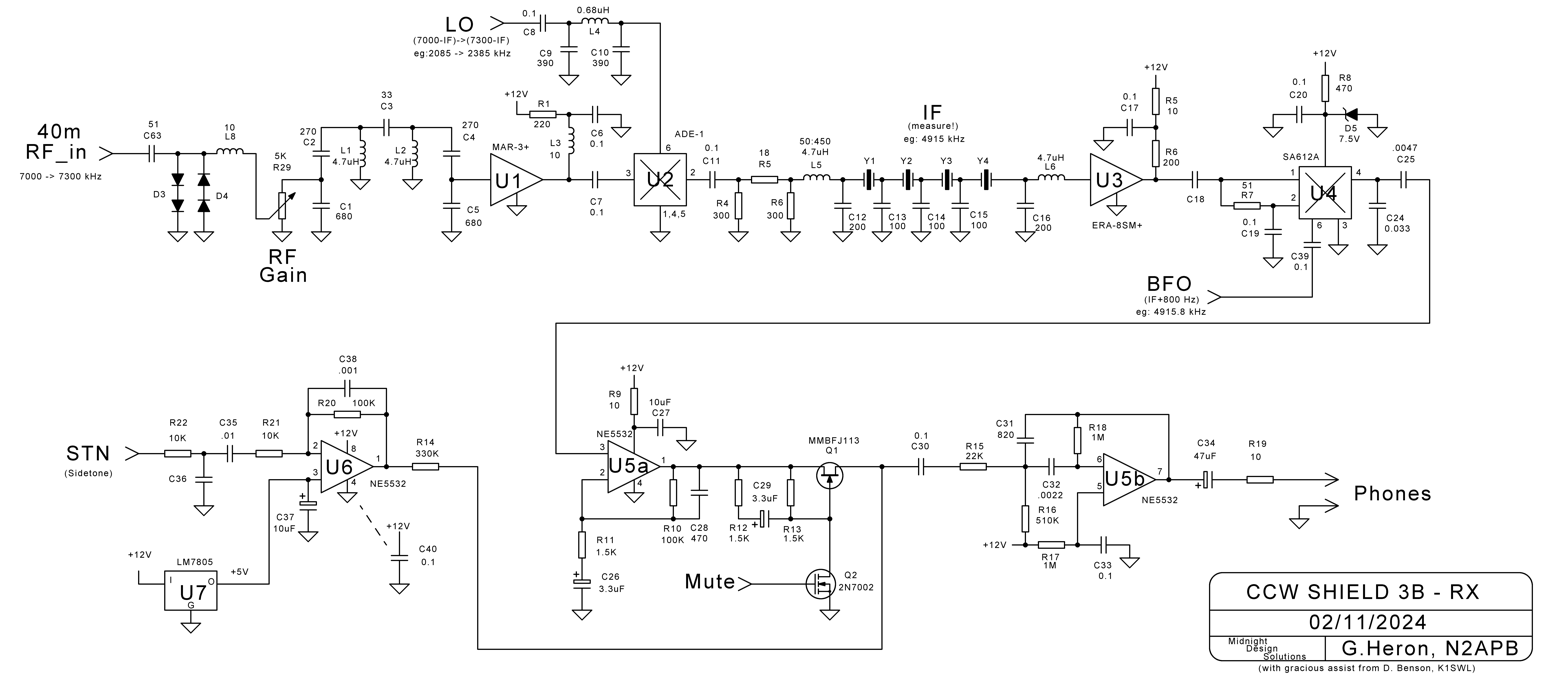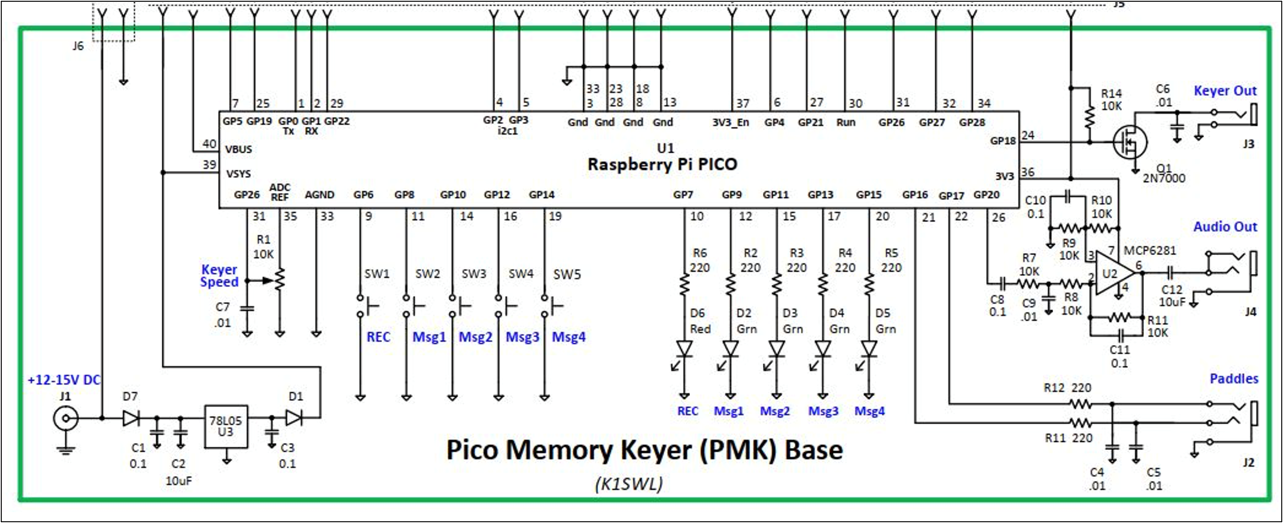|
|
Midnight Coherent CW Transceiver |
CCW paper delivered
CCW slide deck presented Shield 3b: Rx Schematic (early)
|
“How Low Can You Go?” For Weak Signal Communications
Figure 1: CCW 'engine' on red pcb shield mounted atop K1SWL PicoMite Memory Keyer Overview Imagine how exciting it would be to copy a solid 599 signal when you hear nothing but the noise floor. This project chronicles the design of such a transceiver using an inexpensive Raspberry Pi Pico controller to achieve 20- 30 dB signal path improvement over conventional CW rigs. Implementing techniques born almost 50 years ago one can turn a 5-watt QRP signal into the equivalent of more than 300 watts on the receive side with properly equipped stations. Wait, WHAT?? o Copy a solid 599 signal when you hear nothing but the noise floor? o Gain a 20-30 dB signal path improvement over conventional CW rigs?
o
Turn your 5-watt QRP signal into the equivalent of more than 300
watts on the receive side? YES! Using a modern approach to Coherent CW designs from 1970s: o Inexpensive Pico processor o GPS-timed transmission & reception o DSP processing of Rx signal within precisely maintained windows corresponding to 12wpm code speeds.
Coherent CW: A Quick Technical Backgrounder An age-old axiom is popularized in
detective stories: “The more we know about something we seek the easier
it is to find.” This can also apply very well to weak signal reception
of Morse code. The things we need to know for schedules of course
include the date and time, but equally important are three factors
enabling coherent CW reception: the frequency to be
used, the timing (wpm) of the CW signals being received,
and the phasing of the signals or knowing precisely when
to start looking for a dot or a dash. To paraphrase an aspect of the
Shannon-Hartley1 communications theorem, when we fit the narrowest
bandwidth filter to the given information rate of a channel, the
signal-to-noise ratio (SNR) skyrockets, which is a good thing because
then only the ‘marks’ in the channel (i.e., the dits and dahs) are
coming through while both the man-made band noise (QRM) and nature-made
band noise (QRN) are vastly suppressed.
The narrow 10 Hz CCW filter shown in
the center is comparatively miniscule compared to traditional CW and SSB
filters.
For additional detail ... Please read the paper "Modern CCW" paper, slide deck and interview that I provided at the FDIM 2023 QRP Conference. Research for CCW encoding and detection algorithm improvement is continuing with David Kazdan AD8Y, professor at Case Western Reserve University, Dave Benson K1SWL, and Peter Eaton WB9FLW. It is my hope and desire that our work may result in a low-cost Coherent CW transceiver design that can be productized to serve a useful role in the weak signal CW communications field for Amateur Radio Operators worldwide. George Heron N2APB
|

SHIELD 3a: Transmitter, GPS, Display & Siggen

PMK Base board is available; Shield 3a (Tx) mid-Feb; Shield 3b (Rx) still in development.
Copyright 2019-2023 Midnight Design
Solutions, LLC. All Rights Reserved.
Page last updated: Feb 17, 2024
.jpg)
